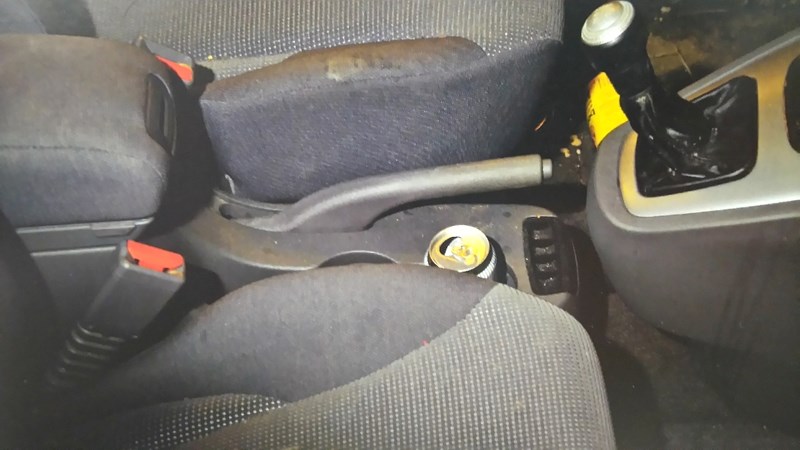The likelihood that two DNA samples collected from Lyle and Marie McCann's SUV belonged to someone other than Travis Vader is one in 3,000,000,000 (three trillion), an expert witness testified at Vader's ongoing murder trial.
The likelihood that two DNA samples collected from Lyle and Marie McCann's SUV belonged to someone other than Travis Vader is one in 3,000,000,000 (three trillion), an expert witness testified at Vader's ongoing murder trial.
Vashni Skipper, an expert in DNA analysis who processed many of the samples from the McCann investigation, told court a DNA sample taken from a beer can in the SUV and another from blood on the SUV's front centre armrest both match a sample taken from Vader.
Crown prosecutor Jim Stewart said in his opening statement at the outset of the trial, now near the end of its fifth week, that the DNA evidence linking Vader to the McCanns would is significant.
The McCanns were last seen July 3 at the St. Albert Superstore en route to British Columbia. Their motorhome was found burning two days later, and they are presumed dead. Their bodies have never been recovered.
Skipper testified for all of Wednesday afternoon and all of Thursday morning, explaining her reports and the processes she used to create them in great detail.
She also said there was a similar likelihood that blood found on food cans in the SUV belonged to Marie McCann, and blood on Lyle McCann's hat belonged to him.
She explained when investigators request DNA testing on pieces of evidence, those request go into a queue to be handled by the RCMP laboratory where she works as a reporting scientist.
A search technologist looks at the items to determine if and how samples of biological material suitable for analysis can be taken from the items and analyzed. Those samples are taken in a controlled environment to minimize the risk of contaminating a sample. Any possible contamination or error is reported and recorded.
“We take quality very seriously,” she said. “If there's contamination we put that in our report and of course we do try to find the source of that contamination.”
Those samples are then forwarded to a reporting scientist for analysis, with the assistance of a large robot that automates some of the “menial tasks” associated with DNA analysis – but the reporting scientist is with and watching the machine the entire time.
Skipper said she then establishes whether there is human DNA from that sample, how much of a sample can be determined to come from a single source, and then creates a "genetic profile" for each sample.
Those profiles are then compared against a known sample to establish similarities and differences; police maintain a national database of known samples provided in many cases from accused and/or convicted criminals.
Skipper explained samples for comparison can also be taken from an object known or believed to have DNA from an individual. For this investigation, samples from Marie McCann's hair brush and Lyle McCann's sneakers, combined with samples provided from their three children, were used to establish their genetic profiles for comparison.
Beresh raises doubts
Defence lawyer Brian Beresh raised several questions about possible alternative sources of the DNA found in the SUV and the possibility of human error at the laboratory.
Occasionally pausing to have conversations with Dr. Randell Libby, an American DNA expert, the defence has asked to listen to the Crown's DNA expert who is also expected to testify later in the trial. Beresh first asked Skipper about the prospect of a person's DNA getting into the SUV without that person every getting into the vehicle.
Using a hypothetical situation of his wife sneezing into his driver's side window as an example, he suggested it was possible her DNA could then be detected in the SUV.
Skipper expressed significant doubt this could be the case, but ultimately conceded it couldn't be ruled out as a possibility.
“I would say it would be unlikely, but it would theoretically be possible,” she said.
Beresh also suggested secondary and tertiary kinds of transfers could be possible. For example, his wife sneezes on his hand, he then touches his copy of the Criminal Code, which then tests positive for his wife's DNA.
Skipper explained that likewise, that would be possible, but it would depend on the concentration of the biological material deposited and the possibility of finding secondary or tertiary genetic material would diminish with subsequent contacts.
Beresh confirmed that the laboratory does not have any tests that would determine whether DNA was deposited directly onto an object or via secondary contact, and that there are no tests that could determine how long the genetic material was on an object prior to it being tested.
He also noted Libby had visited the RCMP laboratory in Edmonton near the beginning of the trial, something Skipper said was unusual but not unheard of, and asked about possible human error at the lab.
As an example, he asked about a sample plate that had been dropped during one of the tests relating to this investigation. Skipper confirmed this had happened, but said the samples had already been loaded into the computer prior to that happening.
“That sample had already been loaded on the piece of machinery, but afterward the analyst did drop the plate so we weren't able to do rework on it,” she said, adding documenting any such incidents is part of the rigourous quality-control system the lab employs.
The cross-examination is expected to continue into the afternoon, after which a second recording scientist from the RCMP lab will be called to testify about more results.
